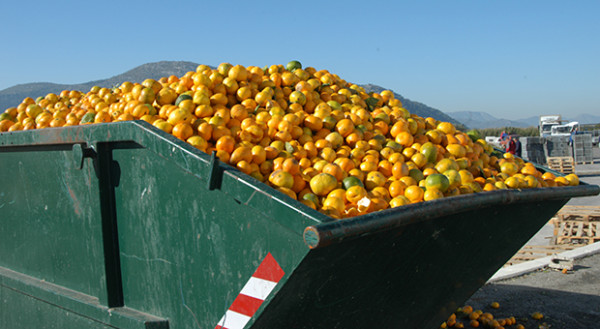Human Wrongs Watch
The full economic, environmental and social costs of food waste amount to approximately 2.6 trillion US dollars annually, according to UN Food and Agriculture Organization (FAO).
Each year, 30 percent of global food production is lost after harvest or wasted in shops, households and catering services. This represents 750 billion USD in terms of producer or farm gate prices, going up to almost a trillion US dollars of trade value of food every year – half the GDP of Italy! *
If nature asked us to pay the total bill for food waste, it could charge society at least another 700 billion dollars a year. Because that wasted food still:
- caused greenhouse gas emissions and climate change damages
- used water for irrigation and increased water scarcity
- cleared forests and eroded land
- led to loss of pollinators, fishes and other biodiversity
And there is more.
Social costs worth another trillion dollars are caused by food that never added one bit of nutrition to humanity. This includes: pesticides impact on human health, loss of livelihoods, as natural resources become more scarce, conflicts induced by pressure on natural resources and subsidies spent to produce food wastage
But those are only the costs that can be calculated. Food wastage has many more costs that cannot be quantified. Imagine if we quantified:
- the loss of wetlands that purify water,
- or of biodiversity of pastures,
- or the value of fish discarded,
- the scarcity of essential agricultural inputs such as phosphorus,
- or the increase in food prices because of less supply…
Assigning a monetary value to environmental or social impacts will always be inexact.
However we look at it, reducing food waste makes sense economically, environmentally and socially.
What can be done?
| – Reducing food loss by raising consumer awareness | |
| – Investing in improved post-harvest infrastructures and reducing food loss means we avoid using natural resources in the first place, leaving them available for next harvest or future generations. | |
| – Food that is about to be wasted on the market can be timely redirected to charities or if it is not up to human consumption standards, then think of feeding it to livestock, so that there is less need to produce animal feed |
When you save the food, you save the resources used to produce it.
Reducing waste by not creating it in the first place should be a priority for all. Watch this short video and help spread the message. (*Source:FAO).
Read also:
No Life-saving Food Aid for 6 Million Syrians Due to Lack of Funds
Food Security Is Still “Touch-and-Go” in Arid, Conflict-torn Somalia
Lead in Infant Formula, Arsenic in Rice — UN Sets New Food Safety Standards
One Third of All Food Produced Is Lost or Wasted Each Year
Mauritania: Sharing Every Bit of Food … Just to Survive
South Sudan: “People are Dying, People are Suffering—This Is a Crisis”
Burkina Faso: Families Eating the Seeds They Should Plant
Sahel: No Food for 18 Million People – Urgent Help Needed for Women, Children
Demand for More Milk and Meat Feeds 13 Big Killers
Rising Voracious Consumption, Living as If We Had Two Planets
Big Business Stealing Seeds, Devouring Life Cycle
Food Inequality Equation: 1.5 Billion Obese; 925 Million Hungry
A U.S. Military Command to Grab Africa’s Natural and Mineral Resources










